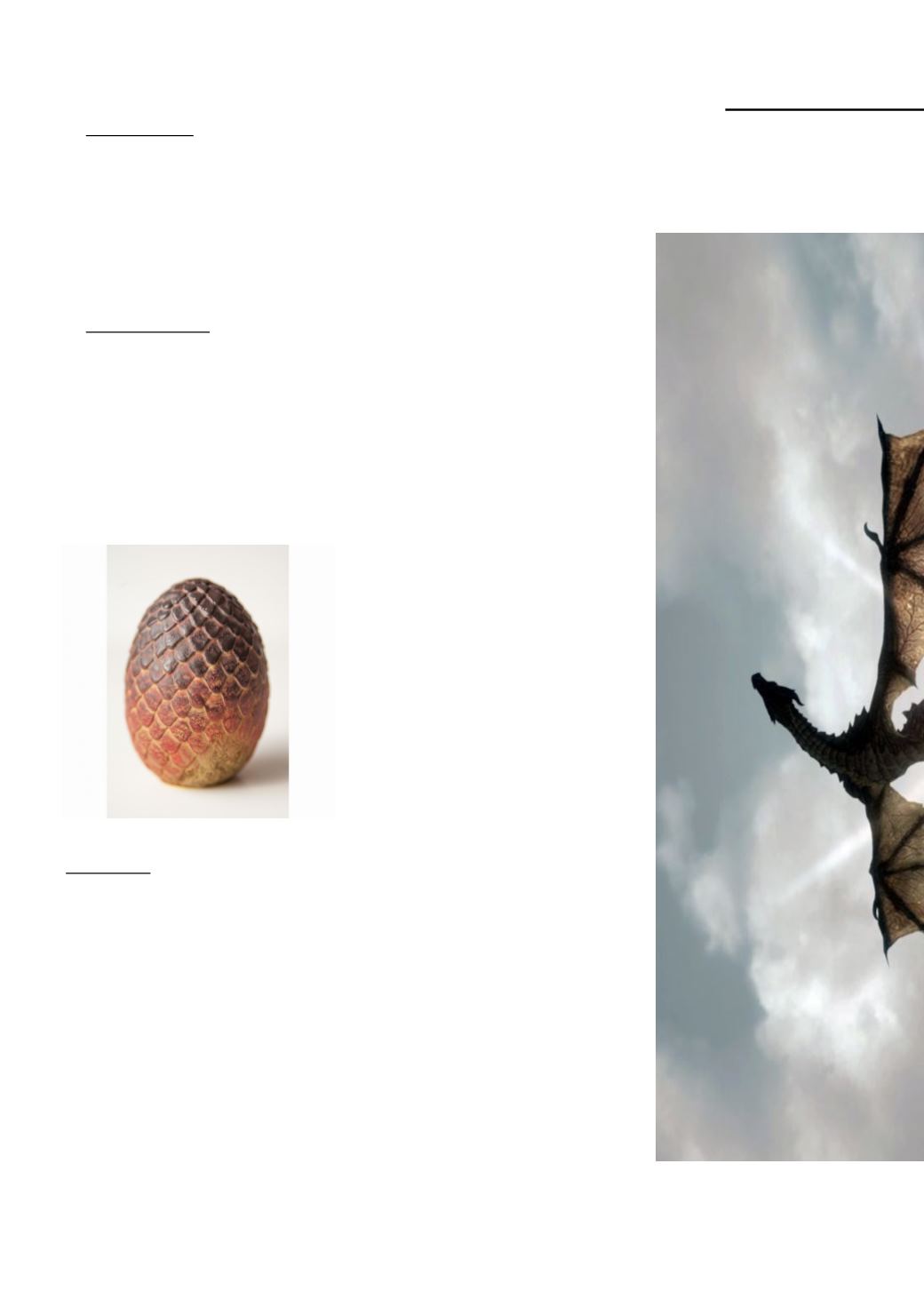

Issue 2 | February 2017
8
Introduction
The dragon is a mystical creature, which can be com-
monly found in different cultures’ mythology, modern
fantasy books or films, and in other aspects of modern me-
dia. They are incredible creatures in fiction. The question is:
could they exist theoretically?
Base structure
Most people would agree, that the dragon is essentially a reptile and has
most of their basic characteristics, such as scales. Scales and horns or
spikes, if present, are made of a densely packed cells of protein called
keratin, which is developed from epidermal cells. In some existing reptil-
ian species the scales are additionally reinforced by bone plates, which
should be the case for dragons as well.
The main characteristic which separates dragons from reptiles is the
number of limbs. Dragons have six –
four walking ones and a pair of wings.
The mutation producing an additional
pair of limbs is possible. This mutation
explains insects having six legs. There
is nothing which would prevent it’s
development in reptiles if it would in-
crease the chances of survival.
Digestion
Dragons are generally described as omnivores, which means that they
have two different types of teeth - incisors and canines for meat eat-
ing and molars for plant material. At times, dragons are also described
to eat whole pieces of meat with bones, which cannot be digested nat-
urally. However there is a way out, which is not uncommon for many
reptile species and can be seen in birds or mammals as well. These
animals ingest rocks, which are then situated in the second chamber
of the stomach and they help to physically divide food into smaller
digestible parts – such as whole nuts in the case of birds or pieces of
bone taken in by crocodiles or dragons.
Theoretical Bi
Sasha Orlov
















